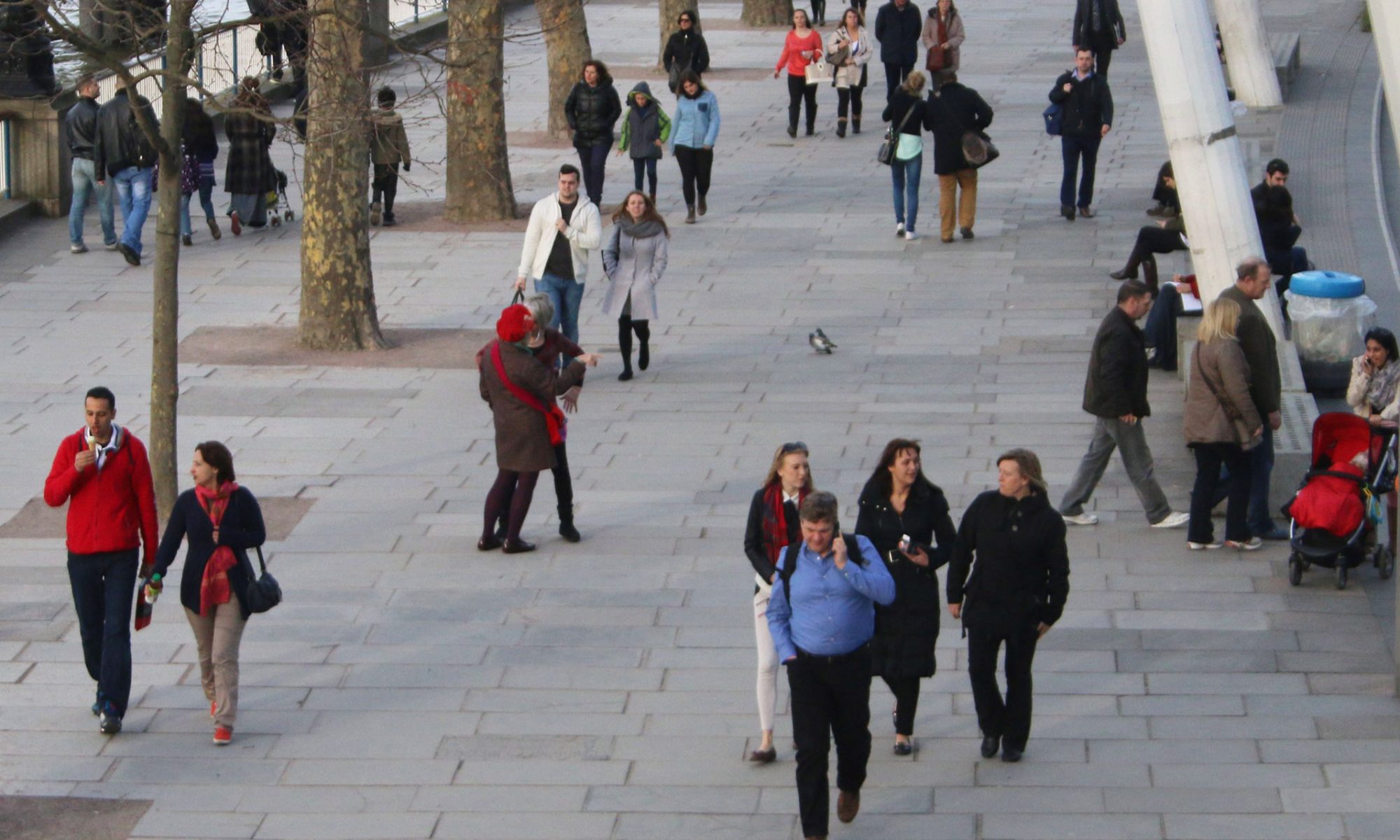
by Robert Molteno and Jeremy Leach, London Living Streets
For a number of years, ‘smoothing traffic flow’ was at the heart of roads transport policy in London. This policy of facilitating journeys by motor vehicle infected everything – and negatively from the point of view of Londoners wanting to walk short trips, or cycle, or have clean air. 30mph and higher speed limits were largely unquestioned; pedestrian crossing timings were geared to keeping motor vehicles moving; signalised pedestrian crossings were removed; and roads capacity was increased, for example by adding more lanes, narrowing pavements or building wide turning radii at intersections.
Since the introduction of the current Mayor’s Transport Strategy in 2018, things have moved on and new mantras have come to the fore including:
- ‘mode shift towards walking, cycling and the use of public transport’;
- ‘Vision Zero’ that aims for what has long been the norm in aviation and rail transport namely, zero accidents and zero human casualties;
- ‘Healthy Streets’ with its famous ‘wheel’ illustrating the ten characteristics a street should have to be regarded as fit for purpose for all users and not just drivers;
- and most recently, ‘Low Traffic Neighbourhoods’.
Low Traffic Neighbourhoods catching on in borough after borough
Guided by ‘real time’, navigation software like Waze, drivers are helped to cut a few minutes or even seconds off their journeys by diverting them into residential neighbourhoods. Low Traffic Neighbourhoods use ‘modal filters’ to prevent motorists from taking these short-cuts. Once installed, Low Traffic Neighbourhoods become popular with residents because they experience quieter local streets, cleaner air, and much safer conditions in which to walk, cycle, shop, accompany children to school etc.
The most developed, large-scale network of Low Traffic Neighbourhoods exists in the London borough of Waltham Forest. This idea is now catching on in many other parts of London. The Brixton Liveable Neighbourhood project in Lambeth looks set to create three Low Traffic Neighbourhoods. More are under discussion in Southwark. In Wandsworth, the new cabinet member for transport has invited residents to submit areas they consider needing a low-traffic makeover. And in Lewisham, the council has plans to divide the whole borough into a series of connected Low Traffic Neighbourhoods.
But what about the main roads?
The main roads are London’s arteries, leading towards, or running through, London’s many local town centres, as well as the City and the West End. This is where most buses are and where most HGVs and other commercial vehicles hurry along.
One downside that some transport planners, highway engineers and residents have feared is that Low Traffic Neighbourhoods may result in even greater numbers of motor vehicles on these main roads.
In fact, there is evidence, from Waltham Forest in particular, that well-designed and wide-area Low Traffic Neighbourhoods lead to traffic evaporation across a whole area, including the main roads. This is because some drivers simply avoid the area as a whole, or decide that a car journey could more conveniently be made using public transport, on foot or by bicycle. Read our recent blog for more evidence and experience here.
Supporting residents on main roads
But given the pressure that already exists from traffic on main roads, it is vital that when changes are made to residential roads that conditions also improve for residents on the surrounding main roads.
There are a range of measures that can be taken by councils in order to protect people living, working, and using facilities on these main roads.
- Measures to prioritise active travel and reduce capacity for vehicles including wider pavements; bus gates; 20mph limits; more crossings; more seating, trees, and planters; continuous crossings for pedestrians across side roads and closing side streets to motor vehicles.
- Protected cycle tracks; bus lanes; planted lane dividers to separate people walking from polluting vehicles.
- Increasing the cost while restricting the availability of parking.
- Development of sustainable delivery/consolidation hubs to reduce the number of vans using main roads.
- Planning policies that require car-free development.
- Local bans on diesel vehicles whose emissions exceed EU-permitted limits.
- Low Emission Bus Zones on main roads.
- Roll out of a Workplace Parking Levy.
- Lobbying for expansion of Ultra Low Emission Zone and Road User Charging.
- Green screens and other “mitigation” measures may also reduce localised pollution impacts of increased motor traffic.
London Living Streets has produced a briefing document offering greater detail about these measures. Please contact us if you need more information or advice.

